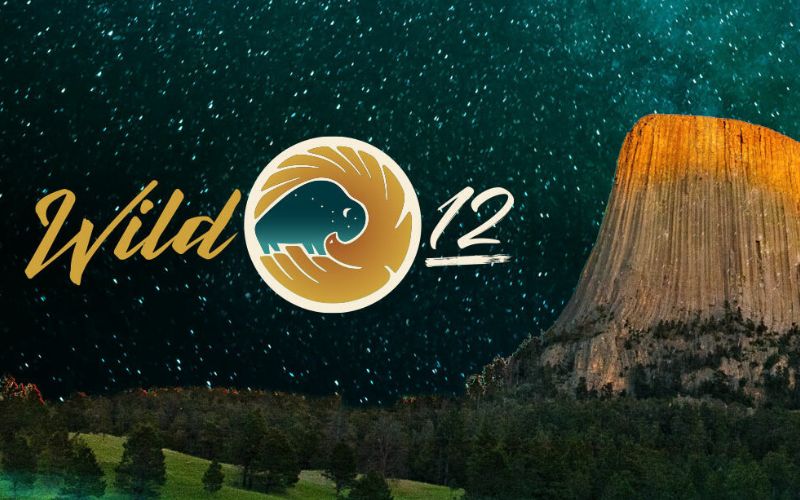
- Details
- By Native News Online Staff
Wilderness Foundation Global recently announced the 12th World Wilderness Congress, an event that brings Indigenous leadership, artists, scientists, land managers, and government officials together from around the world.
The event will be held from August 25th to the 31st this year in He Sapa (the Black Hills), located on the sacred lands of the Lakota Nation. This was based on an invitation issued by Phil Two Eagle, the Executive Director of the Sicangu Lakota Treaty Council, who expressed a desire to bring the world to the Lakota homelands.
“At the invitation of the Sicangu Lakota Treaty Council, we have an all too rare opportunity to reassess wilderness through Indigenous meanings and relationships,” said Amy Lewis, Chief
Executive Officer of the WILD Foundation said in a press release. “Despite progress at the international level, which makes wilderness a more inclusive framework, with a few exceptions, we still have not formally and collectively revisited this concept with the broad input of Indigenous leaders from around the world. WILD12 is our opportunity as a global community to do so with the intent of producing concrete declarations that inform national and international policy.”
Program officials said they expect over 2,000 delegates to attend. Topics of discussion will include rewilding, especially when involving the reintroduction of bison, biodiversity credits and conservation finance, and the conservation of Antarctica.
This will be the first time in more than ten years that the World Wilderness Congress convened due to interruptions caused by the COVID-19 pandemic. Since 1976, the World Congress has become the longest-running international public environmental forum to which all sectors of society are invited.
Past World Wilderness Congress have featured keynote speakers that have included the former President of Mexico, Felipe Calderón; the current President of South Africa, Cyril
Ramaphosa; former Prime Minister of Norway, Gro Harlem Brundtland; former United States Secretary of Treasury, James Baker; Chief Herb Norwegian of the Dehcho People; Chief Tashka Yawanawa of the Yawanawa People; Jane Goodall and Sylvia Earle, among others.
No membership is required to become a delegate and anyone can attend and participate in the deliberative processes.
“I would like to take this opportunity to welcome you to the Sacred Black Hills in our Lakota language we call it He Sapa the center of the Lakota universe where the creation stories tell us the Lakota came out of the Wind Cave and began our Journey here on Turtle Island North America, we hope to teach the world about the sacredness of creating a relationship with Unci
Maka (Mother Earth) so that all our children will see the next seven generations,” remarked Phil Two Eagle, Executive Director, Sicangu Lakota Treaty Council, in a press release.
More Stories Like This
Southern Sierra Miwuk Nation Gets 900-Acres ofLand BackChilkat Indian Village Tells New Palmer Mine Owners They Are “Not Welcome” in Chilkat Valley
Tribes, Coastal Group Ask Army Corps to Revoke Permit for Texas Export Terminal
Michigan Tribes Tell Supreme Court: Don’t Bail Out Enbridge
Alaskans Raise More Than $1 Million For Communities Devastated by Typhoon Halong
Help us tell the stories that could save Native languages and food traditions
At a critical moment for Indian Country, Native News Online is embarking on our most ambitious reporting project yet: "Cultivating Culture," a three-year investigation into two forces shaping Native community survival—food sovereignty and language revitalization.
The devastating impact of COVID-19 accelerated the loss of Native elders and with them, irreplaceable cultural knowledge. Yet across tribal communities, innovative leaders are fighting back, reclaiming traditional food systems and breathing new life into Native languages. These aren't just cultural preservation efforts—they're powerful pathways to community health, healing, and resilience.
Our dedicated reporting team will spend three years documenting these stories through on-the-ground reporting in 18 tribal communities, producing over 200 in-depth stories, 18 podcast episodes, and multimedia content that amplifies Indigenous voices. We'll show policymakers, funders, and allies how cultural restoration directly impacts physical and mental wellness while celebrating successful models of sovereignty and self-determination.
This isn't corporate media parachuting into Indian Country for a quick story. This is sustained, relationship-based journalism by Native reporters who understand these communities. It's "Warrior Journalism"—fearless reporting that serves the 5.5 million readers who depend on us for news that mainstream media often ignores.
We need your help right now. While we've secured partial funding, we're still $450,000 short of our three-year budget. Our immediate goal is $25,000 this month to keep this critical work moving forward—funding reporter salaries, travel to remote communities, photography, and the deep reporting these stories deserve.
Every dollar directly supports Indigenous journalists telling Indigenous stories. Whether it's $5 or $50, your contribution ensures these vital narratives of resilience, innovation, and hope don't disappear into silence.
 The stakes couldn't be higher. Native languages are being lost at an alarming rate. Food insecurity plagues many tribal communities. But solutions are emerging, and these stories need to be told.
The stakes couldn't be higher. Native languages are being lost at an alarming rate. Food insecurity plagues many tribal communities. But solutions are emerging, and these stories need to be told.
Support independent Native journalism. Fund the stories that matter.
Levi Rickert (Potawatomi), Editor & Publisher


